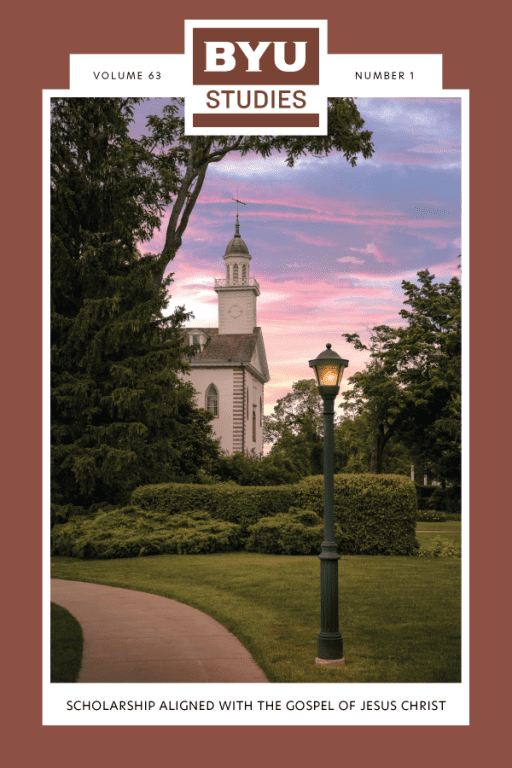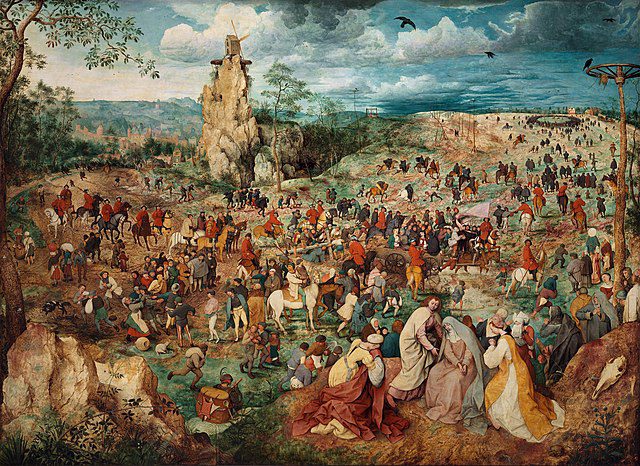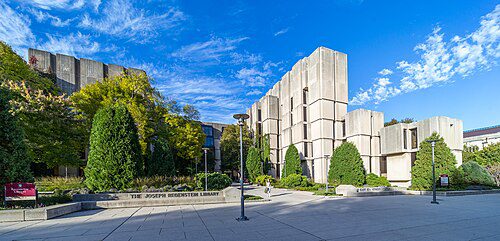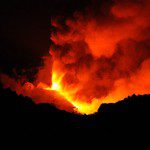
I’ve just finished reading Keith A. Erekson and Matthew J. Grow, “Assuming Stewardship: Notes on the Recent Transfer from Community of Christ,” BYU Studies 63/1 (2024): 4-32. Their article is a useful and well-illustrated summary account of the properties and the artifacts whose change in ownership was announced on 5 March 2024. I found their two maps of Kirtland and Nauvoo especially helpful.
However, this statement in particular caught my attention:
The House of the Lord in Kirtland must be counted among the most significant holy sites in the world. (9)
Such an assertion would surely seem absurdly grandiose to most in the world – and particularly so when the humble and relatively small Kirtland Temple, which is located in a leafy semi-rural suburb of Cleveland, Ohio, is compared to, say, St. Peter’s Basilica, St. Paul’s Cathedral, the Dome of the Rock and the Temple Mount in Jerusalem, or the temple complexes of Karnak and Angkor Wat. And, if the religious claims made about events in and about the Kirtland Temple are false, it and they are, indeed, ridiculous and of no special interest except as minor and redundant testaments to human mendacity, gullibility, and fantasy.
If those claims are true, however, the assertion is manifestly justified. So far as I’m aware, the God and Creator of our world has appeared in neither St. Peter’s Basilica, nor St. Paul’s Cathedral, nor the Dome of the Rock, nor the temple complexes of Karnak and Angkor Wat. If those claims are true, the Kirtland Temple is worthy of inclusion in a very small but exalted class of sacred sites that includes Jerusalem’s Temple Mount and only a small group of other such holy places.
The paragraph that begins with the sentence cited above continues as follows:
Located in what is now a suburb of Cleveland in northeastern Ohio, the Kirtland Temple was the first temple built by Latter-day Saints. Revelations in the Doctrine and Covenants outlined its purposes and directed its construction. Its cornerstone was laid on July 23, 1833, and its construction involved significant personal sacrifice by individual members of the early Church. During the dedicatory services on March 27 and 31, 1836, and in the solemn assembly on March 30, Joseph Smith and others reported glorious spiritual manifestations, including heavenly visions and speaking in tongues. On Easter Sunday, April 3, 1836, Joseph Smith and Oliver Cowdery experienced a vision of Jesus Christ and visitations from several biblical prophets. A few months earlier, on January 21, 1836, while in the nearly finished temple, Joseph Smith had seen a vision of the celestial kingdom, in which he viewed several members of his family and notable biblical figures. (9)

When I was there a couple of weeks ago, I was struck by the traffic passing immediately before the temple, on Chillicothe Road. I thought how little attention most of the passersby likely paid to what is, to the majority of them, a familiar part of their mundane daily environment as they rush about their daily business. Does the Kirtland Temple figure, even occasionally, in the reflections of more than a few hundred, or a few thousand, of the residents of greater Cleveland? Probably not. With that thought in mind, I recalled the painting above, of Christ carrying the cross. It was done by Pieter Brueghel the Elder in or around the year 1564. If you look very, very carefully, you may be able to see Jesus in the distance, carrying his cross at the very center of the painting, as life goes on around him. Very, very few of the many people depicted in this work are even slightly aware of the transcendent event that is taking place directly in their midst. So it was in ancient Judea. So it is today.
Analogous situations aren’t difficult to find, of course. In sacred history, I’m sure that ordinary farm activities – e.g., hunting, chopping firewood, clearing fields, building fences, and, notably, producing maple syrup – were going on all around that grove of trees in which the Father and the Son appeared to the young Joseph Smith. Were they interrupted or disturbed in any way by that pivotal event? Apparently not.
In secular history, I’ll point to just one episode from my own family: During the Second World War, before he was deployed to Europe with the 11th Armored Division of General Patton’s Third Army, my father was recruited to serve with the Office of Strategic Services, a forerunner of the Central Intelligence Agency. As part of his preparation, he was sent to an intensive German program at the University of Chicago. Several times each day while he was there, he passed by Stagg Field, where the University’s football team, which had by then been discontinued, had formerly played. He and his fellow soldiers could tell that something mysterious and significant was going on under the bleachers at Stagg Field because of the tight security in the area. Only later did he learn that what was going on was the famous “Manhattan Project.” It was under those bleachers that Enrico Fermi and his team created the first artificial nuclear chain reaction – a forerunner, of course, to today’s nuclear energy but, more to the point at that time, to Dr. Oppenheimer’s atomic bomb at Alamagordo, New Mexico, and to the historic attacks on Hiroshima and Nagasaki that helped to end the war in the Pacific.

A small and irrelevant but amusing story from his time in that German program at the University of Chicago: His group of soldier-students had a military policeman (or something of that sort) attached to them, whose assignment was to make sure that they faithfully attended their classes and to their studies. He attended the classes along with them, but doing so clearly taught him little or nothing about the language. (I can easily imagine that he simply sat in the back, once he thought that his task was accomplished, reading a newspaper or a magazine. Or a comic book.). Their teacher would occasionally address the class as Meine Herren!(roughly, “Gentlemen!”). To their escort—and, if you know any German at all, it shouldn’t be difficult to imagine how this might occur—the term of address Meine Herren! sounded like a certain Irish surname with which he was familiar. Thus, one day, when she addressed her class as “Gentlemen!” he suddenly stood up indignantly in the back of the room and demanded to know “Where the hell is Monahan!” My Dad remembered that incident, and chuckled about it, to the end of his life.
Posted from Williamsburg, Virginia













